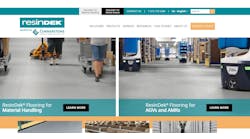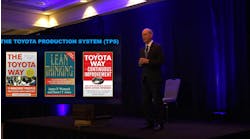Manufacturers that are in tune with the quickly evolving workforce landscape are looking beyond the traditional areas of attracting, recruiting and retaining talent. They understand that the post-pandemic workforce is all about collaboration and values.
Job prospects value inclusivity in leadership and how decisions are made. They want to know that they will be treated well at your company, but they also want to know what value your company provides for its people, community, and the world in general.
In order for many small- and medium-sized manufacturers to thrive through the pending retirements of many key performers and the shifting workforce expectations, they must move leadership from a “me” to “we” perspective. One clear path to this transformation is through team coaching. Team coaching addresses the individual skills of your leaders while also addressing group dynamics. Much like a sports team, good coaching helps the group stretch beyond their current capabilities to achieve improved cohesiveness, performance, and value creation.
Team Coaching Addresses Your Organizational Health
A successful organization is healthy and smart, according to leadership author, Patrick Lencioni. He describes successful companies as being able to align around strategic goals and execute against a shared leadership vision. These companies are agile and able to renew themselves through innovation and creative thinking. He says we all recognize a smart company; it is good at strategy, marketing, finance, and technology. In most companies, these subjects get 95% of the leaders’ attention. Lencioni describes a healthy company as being smart but also having minimal politics and confusion, high morale and productivity, and very low employee turnover.
Just as stakeholders look for signs of organizational health, employees look for signs of healthy leadership. They want to know how their leaders respond in a VUCA world (VUCA is an acronym with military origins used to describe the world after the Cold War):
- Volatility
- Uncertainty
- Complexity
- Ambiguity
Organizational health is about shared purpose, agility and resilience.
In a manufacturing organization, a healthy organization will operationalize its values. Its strategy will translate to the work environment. Values will emerge in behaviors on the facility floor in how people respond to each other and how they go about streamlining processes to reduce duplication and increase efficiency. It’s a culture of idea sharing and mutual respect.
Team Coaching Is Not Traditional Training; It’s Collectively Moving from Me to We
Traditional training often begins with a “sage on the stage,” an expert explaining how to do something and sharing tips and best practices. In team coaching, the coach walks alongside the leaders, using their language and terminology to facilitate the dialogue and help them visualize future success and identify what might be getting in the way.
A key aspect of team coaching is addressing biases and accountability issues. Our work cultures have often accepted some behaviors that allow us to become complacent. Until we gain greater awareness and understanding, these unproductive behaviors will continue. Examples of this might include:
- Low adherence to safety, efficiency, and/or quality protocols due to lack of consistent accountability and follow through
- A lack of coordination across businesses and functions due to poor organizational design and/or teams unwilling to collaborate
- Leaders not working as a unified team thus, unwittingly, creating internal rivalries
Without open and honest conversations, you will always have a lack of cohesiveness.
Perhaps new employees are treated well for their first 30 days, but then start to experience inconsistencies in expectations, behaviors and accountability. This plays out with retention issues, which is often the case when many new employees don’t last more than 90 days. Or, maybe key leaders are burned out and depart with more frequency than in the past.
In team coaching, the participants own the context; the coach does not provide answers.
Instead, the coach listens for the questions that aren’t being asked and surfaces the underpinnings that cause stumbling blocks and draws out a creative thought process. The leadership team works together to identify challenges and develop a plan to address future opportunities. This is how teams move from “me” to “we.”
How to Design and Create the Culture You Seek in Your Workplace
There are two key components in creating and designing a culture that supports the behaviors that you desire in your workplace: process and focus.
Walk Through a Process of Direction, Alignment, Commitment
Team coaching begins with a leadership assessment, which will help teams capitalize on their leadership strengths and allow space to better understand their leadership weaknesses. This not only summarizes the overall health of your leadership, it also gives you a glimpse into the health of your organization.
The next step is an analysis of your strengths, challenges, and opportunities. Look at your leadership alignment, gaps and opportunities for future growth. This will shape how you will lead the change you seek. Leadership has to be willing to be vulnerable in order to improve your work culture. Healthy, honest discourse can lead to transformational change for the betterment of all.
Focus on the 5 Behaviors of a Cohesive Team
Lencioni identifies five essential behaviors needed for a team to excel. Each behavior in the model builds upon the previous and supports the others, similar to a pyramid. The behaviors are:
- TRUST: This is the base. Without trust, a team can make little progress in gaining cohesiveness. Trust is the willingness of team members to let go of pride and fear and to sacrifice their egos for the collective good of the organization.
- CONFLICT: If trust is in place, conflict is constructive and necessary to ensure all points of view are understood and taken into account. Team coaching does not eliminate conflict, it helps us approach it with honesty and inclusivity.
- COMMITMENT: Gaining commitment is not the same as getting consensus, which often means “compromise” and might not yield the best result. Commitment comes with clarity and advocacy of purpose.
- ACCOUNTABILITY: This is typically the most difficult behavior for a team to master. When team members are truly committed to something, they can hold each other accountable without fear of retribution.
- RESULTS: If each prior behavior is functioning well, the team goal becomes more important than any individual’s personal goal; thus, creating impactful and collective results.
Your leadership will set overall goals and ensure that departments are aligned with appropriate key performance indicators (KPIs). For example, if improving your employee retention is an overall company goal, every department in your company should have tactics that align with that goal. They should have behavioral standards and measurements for accountability.
Techniques to ‘Inspire’ Change in Your Leadership Approaches
Team coaching begins with your core leadership. Once that group has a solid foundation, you should include director-level leaders and then frontline managers. The coaching should help you “inspire” change. Be sure to:
- INITIATE: Host team coaching conversations in a positive, forward-thinking manner.
- NOTE: Share observations and allow for varied perspectives.
- SUPPORT: Provide evidence for how you will support the team going forward.
- POSE QUESTIONS: Pose open-ended, thought-provoking questions in an unbiased, curious manner to foster healthy discussions.
- IDEATE: Review goals and ideas together. Discern the best outcomes together.
- REAFFIRM: Show them that they have been heard and understood.
- ENGAGE: Reinforce positive steps taken and your commitment to the process.
Your Local MEP Center Can Help You Transform Your Leadership Approach
Manufacturers have traditionally focused on the here and now. And that makes sense, given the importance of current and near-term operations. But the pace of change has only quickened, from the adoption of Industry 4.0 to workforce dynamics and unforeseen disruptions. The future is, indeed, faster.
Stacey Curry, Leadership Specialist, IMEC, helps transform organizational cultures by coaching and developing leaders. At IMEC, which is part of the MEP National Network, she is responsible for enhancing leadership effectiveness by helping companies think systemically and strategically about the future evolution of their culture.





